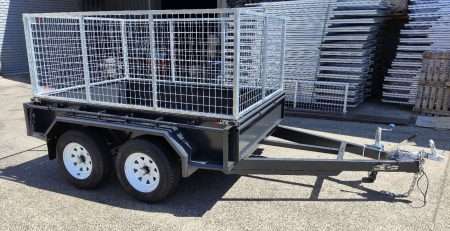
Unlocking Performance: Enhance Your Wheels with Wheel Spacers
Understanding Wheel Spacers
Wheel spacers, an often overlooked component in the realm of automotive accessories, play a significant role in enhancing the performance and aesthetics of a vehicle. This section delves into the definition, function, and the different materials and design options of wheel spacers.
Definition and Function
Wheel spacers are used to create additional space between the wheel hub assembly and the wheel itself, pushing the wheel further out from the vehicle’s body (Orion Motor Tech). This modification widens the vehicle’s track width, which can dramatically improve the vehicle’s stability and handling, providing more grip and stability during cornering.
In addition to the performance benefits, wheel spacers can enhance the overall appearance of a vehicle by filling out the wheel wells and creating a more aggressive stance. They also allow for the installation of larger brake kits or aftermarket wheels that may require extra clearance.
Materials and Design Options
Wheel spacers are available in various designs and sizes, such as 1/4 inch, 1/2 inch, and 1 inch, allowing for various levels of wheel offset adjustment. This variability enables customization based on the specific requirements of a vehicle, including its tire size, wheel size, and the desired stance.
The materials used for wheel spacers are also significant, as they need to withstand the rigors of daily driving while ensuring the vehicle’s safety. Typically, high-grade aluminum is utilized due to its combination of strength, durability, and lightweight properties.
Among the design options, bolt-on and washer-type wheel spacers provide different levels of clearance, offering flexibility depending on the vehicle’s needs (Green Garage Blog).
Understanding the function and design options of wheel spacers is crucial in making an informed decision. Prior to purchasing, it’s essential to understand the vehicle’s requirements and the potential performance enhancements that wheel spacers can offer. Always ensure that wheel spacers are installed correctly and checked regularly, as part of your vehicle’s routine maintenance, to guarantee safe operation.
Advantages of Wheel Spacers
Wheel spacers, often overlooked as a simple accessory, can significantly enhance a vehicle’s performance and aesthetic appeal. This section delves into the benefits that wheel spacers offer.
Enhanced Vehicle Performance
An immediate benefit of wheel spacers is the improvement they offer in vehicle handling and stability. By widening the vehicle’s track width, wheel spacers provide more grip and stability during cornering, enhancing the overall driving experience.
Additionally, the wider track created by wheel spacers leads to a lower center of gravity. This results in increased grip and faster acceleration response, thereby improving vehicle performance.
Aesthetic Improvement
Aesthetics is another area where wheel spacers shine. They can enhance the appearance of a vehicle by filling out the wheel wells and creating a more aggressive stance. The result is a visually striking vehicle that stands out from the crowd.
Wheel spacers can enhance the aesthetic value of a vehicle by creating a more aggressive look and better driving stance. This simple accessory can make a significant difference in the visual appeal of your vehicle.
Enabling Larger Brake Kits
Wheel spacers are not just about enhancing performance and looks. They also play a practical role in enabling the installation of larger brake kits. By creating extra clearance between the wheel hub and the wheel, spacers provide the necessary room for larger brakes, which are often needed in high-performance or heavy-duty vehicles.
From improving handling and aesthetics to enabling larger brake kits, the benefits of wheel spacers are vast. However, it’s critical that they are used correctly and safely. Proper installation and regular maintenance are key to experiencing the full range of benefits that wheel spacers offer. For more information on wheel and tire accessories, check out our articles on lug nuts, hubcaps, and wheel locks.
Choosing the Right Wheel Spacers
Choosing the correct wheel spacers for your vehicle is crucial for both performance and safety. There are various factors involved in this decision, including the size and fit of the spacers, as well as the bolt pattern and thickness.
Considerations for Size and Fit
Wheel spacers are available in various thicknesses to accommodate different vehicles and wheel sizes. The size of the wheel spacer you choose is largely dependent on the amount of clearance that you need between your vehicle’s wheel hub assembly and the wheel itself. Wheel spacers are used to create additional space, pushing the wheel further away from the vehicle’s body.
It’s important to note that bigger isn’t always better when it comes to wheel spacers. Selecting a wheel spacer that is too large can result in the wheel protruding beyond the body of the vehicle, which may not only affect the aesthetic appeal of your vehicle but can also lead to potential issues with the wheel mounting surface or lug nuts.
Bolt Pattern and Thickness
The bolt pattern of the wheel spacer is another crucial factor to consider. This pattern should match the bolt pattern of your vehicle’s wheel hub assembly. If it doesn’t, the wheel spacer will not fit correctly, and it will be unsafe to drive the vehicle.
The thickness of the wheel spacer is also important. A thicker spacer will push the wheel further away from the vehicle, which can improve the vehicle’s stability. However, if the spacer is too thick, it can cause the wheel to protrude too far, leading to potential safety issues.
In summary, when choosing wheel spacers, it’s important to consider the size, fit, bolt pattern, and thickness. These factors will ensure the wheel spacers are compatible with your vehicle and will provide the desired performance enhancement. Always remember to install wheel spacers correctly, following the manufacturer’s instructions, to ensure safe and reliable operation.
Installation of Wheel Spacers
The process of installing wheel spacers is a critical step in enhancing your vehicle’s performance and aesthetics. This process, while seemingly straightforward, requires precision and adherence to manufacturer’s guidelines to ensure safety and reliability.
Importance of Proper Installation
Wheel spacers should be installed correctly, following the manufacturer’s instructions, to ensure safe and reliable operation. It is essential to ensure that the wheel spacers are properly installed and torqued to the manufacturer’s specifications to maintain safety and prevent issues like vibrations or wheel stud failures.
The installation process typically involves removing the vehicle’s wheel, fitting the spacer over the existing studs, and securing it in place with the provided bolts. Once the spacer is securely fastened, the wheel can be reinstalled. During this process, the use of a tire pressure gauge to ensure correct tire pressure can also be beneficial.
Given the precision required, it is important to consult with a professional or a knowledgeable individual if you are unsure about any part of the installation process. Also, always remember to follow the manufacturer’s guidelines when installing and using wheel spacers.
Potential Issues with Improper Installation
Improper installation or incorrect sizing of wheel spacers can lead to safety issues such as wheel vibration, excessive stress on wheel bearings, and brake system problems. These issues can compromise the performance of your vehicle and may even lead to dangerous driving conditions.
For example, improperly installed wheel spacers can cause the wheel to sit unevenly, leading to vibrations while driving. This can create a discomforting driving experience and potentially cause premature wear on other components of the vehicle. Moreover, wheel spacers that are not correctly torqued can lead to wheel stud failures, which can result in the wheel separating from the vehicle.
Furthermore, wheel spacers can have safety concerns if not installed correctly or if low-quality spacers are used. Hence, it’s crucial to not only ensure correct installation but also to invest in high-quality wheel spacers for your vehicle.
Understanding the importance of proper installation and the potential issues with improper installation can help ensure the safe and effective use of wheel spacers. Remember, your vehicle’s safety and performance is paramount, and as such, any modifications should be carried out with care and precision.
Safety and Legal Concerns
As with any automotive modification, safety and legality are two critical aspects to consider when it comes to wheel spacers. Let’s delve into these issues.
Potential Risks and Precautions
While wheel spacers can enhance your vehicle’s performance and aesthetics, they can also pose potential safety concerns if not installed correctly or if low-quality spacers are used (Motor Trend).
For instance, improper installation or incorrect sizing of wheel spacers can lead to safety issues such as wheel vibration, excessive stress on wheel bearings, and brake system problems. Moreover, wheel spacers can potentially create problems if not used properly, such as increased stress on the wheel bearings and suspension components.
To mitigate these risks, it’s crucial to ensure that wheel spacers are installed correctly, following the manufacturer’s instructions. Consulting with a knowledgeable professional before installing wheel spacers can also ensure proper fitment and safety.
For added safety, routine checks and maintenance of your wheel spacers is recommended. Always use high-quality spacers and make sure each spacer fits properly on your vehicle’s wheels. Make sure to also check out our articles on tire pressure gauge and tire repair kit for maintaining optimal tire health and safety.
Legal Restrictions on Wheel Spacers
In addition to safety concerns, it’s also important to note that there may be legal restrictions on the use of wheel spacers. These restrictions vary by state and country, so it’s essential to check with local laws and regulations before installing wheel spacers on your vehicle.
Some regions may place limits on the size or thickness of wheel spacers, while others may require special permits or inspections for vehicles with wheel spacers. Non-compliance with these regulations can result in fines, penalties, or even the revocation of your vehicle’s registration.
Before proceeding with the installation of wheel spacers, it’s advisable to consult with a local automotive professional or legal authority to ensure that your modifications are within the scope of the law. This way, you can enjoy the benefits of wheel spacers while staying on the right side of the law.
Caring for Wheel Spacers
Maintaining and caring for your wheel spacers is essential for their longevity and the overall safety of your vehicle. This includes routine checks and understanding when it’s time to replace them.
Routine Checks and Maintenance
Wheel spacers should be regularly inspected for any signs of damage or wear, such as cracks, corrosion, or loose bolts. If any issues or abnormalities are noticed during these checks, it is important to have the wheel spacers inspected and potentially replaced by a professional.
Cleaning your wheel spacers is also a key part of their maintenance. Any dirt or debris should be removed regularly, as this can affect their performance.
When to Replace Wheel Spacers
Wheel spacers should be replaced if they show signs of damage, such as cracks, deformation, or excessive wear.
Additionally, it is important to replace wheel spacers if they become loose or if there is any play or movement between the spacer and the wheel hub assembly (Motor Trend).
As with any automotive part, regularly inspect your wheel spacers for any signs of wear or damage, and replace them as necessary to maintain their performance and safety.
In conclusion, the care and maintenance of wheel spacers are vital tasks that should not be overlooked. By conducting routine checks and understanding when replacement is necessary, you can ensure the longevity and safe operation of your wheel spacers. For other automotive accessories and parts, check out our articles on lug nuts, hubcaps, wheel locks, and tire pressure gauges.
Author
I am Rahatul Ashiq Tamal. Another author of Muscle Trailers. Muscle Trailers is a well-known trailer brand in Sydney, Melbourne & Adelaide

How to Mount a Spare Tire on Your Trailer: A Simple Step-by-Step Guide
Trailer service centers receive over 1 million phone calls and 1.3 million emails each year about trailer maintenance problems....

How to Fix RV Roof Leaks: Simple Roof Leak Detection Guide for Beginners
Did you know DIY RV roof repairs can cost under $50? But undetected leaks could lead to substantially higher repair...

Starting a Food Truck Business in Australia: From Trailer Selection to Launch
The Australian mobile food market has evolved into a billion-dollar industry. This makes a food truck...
